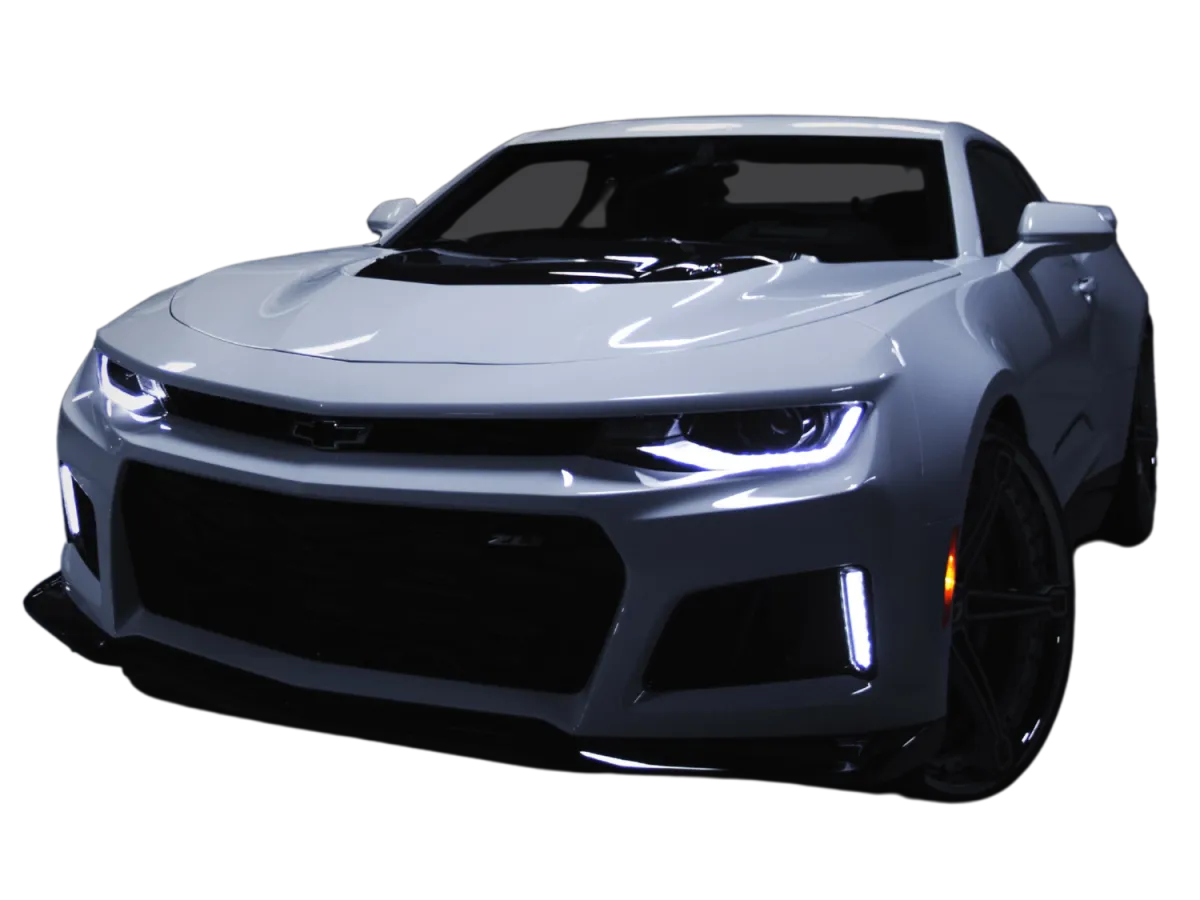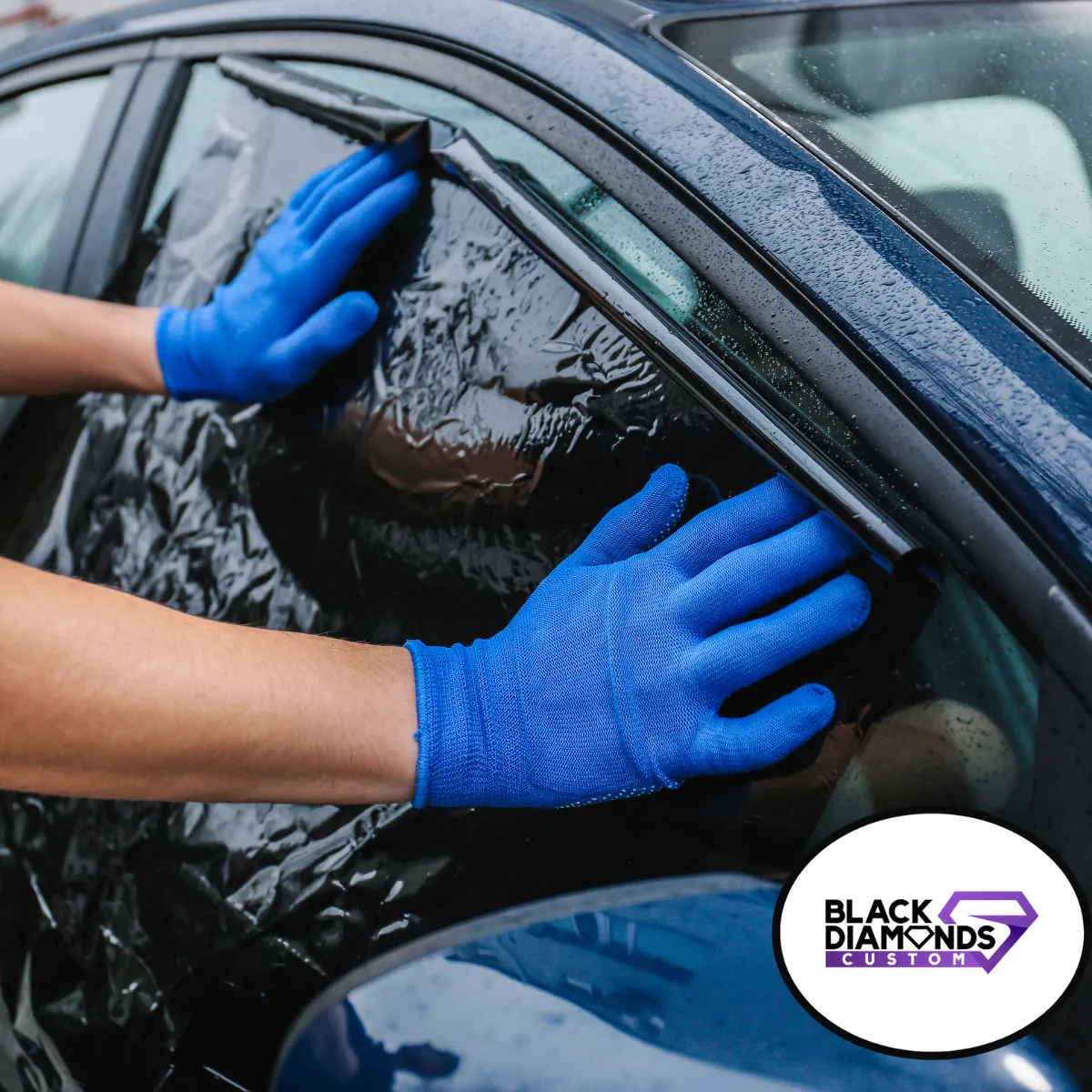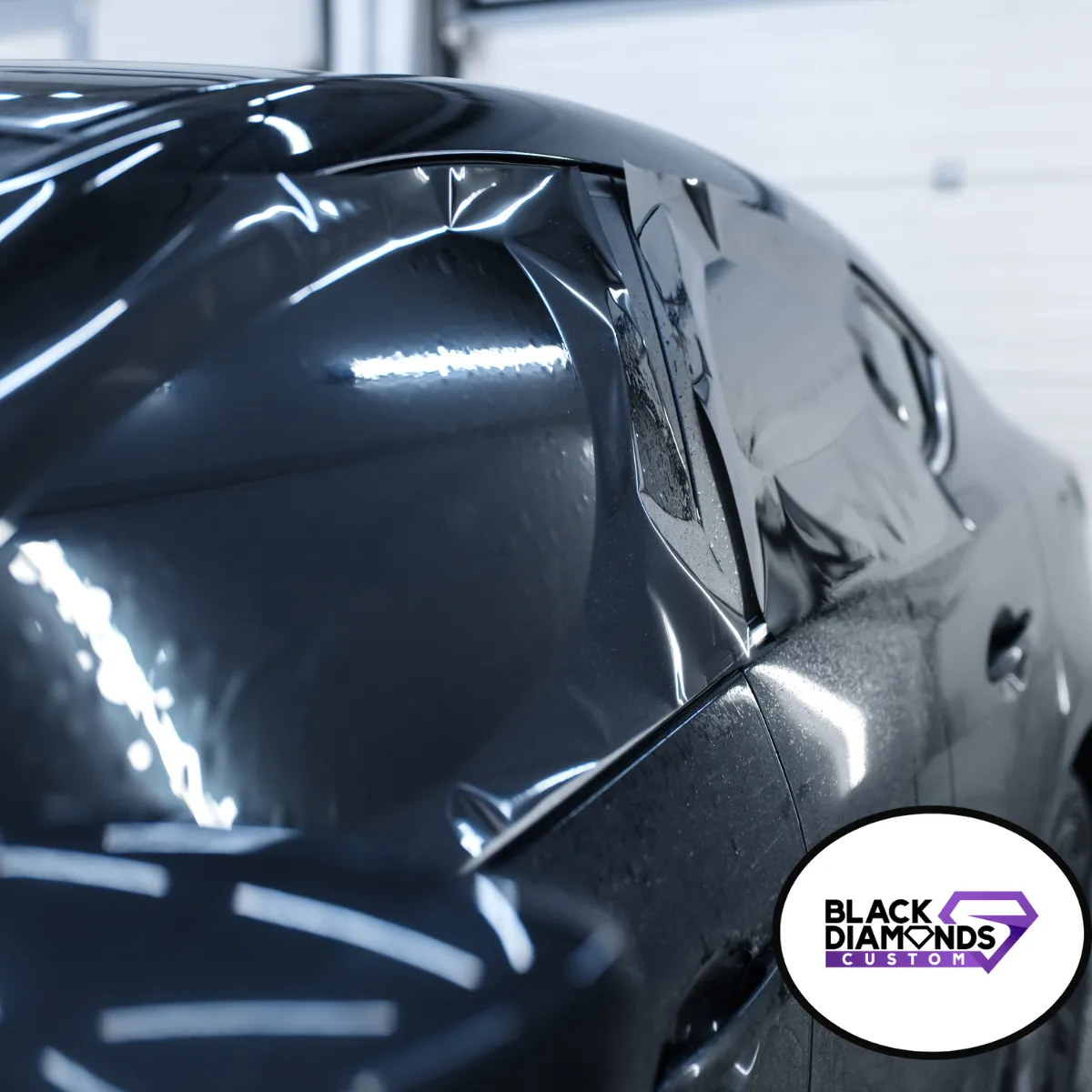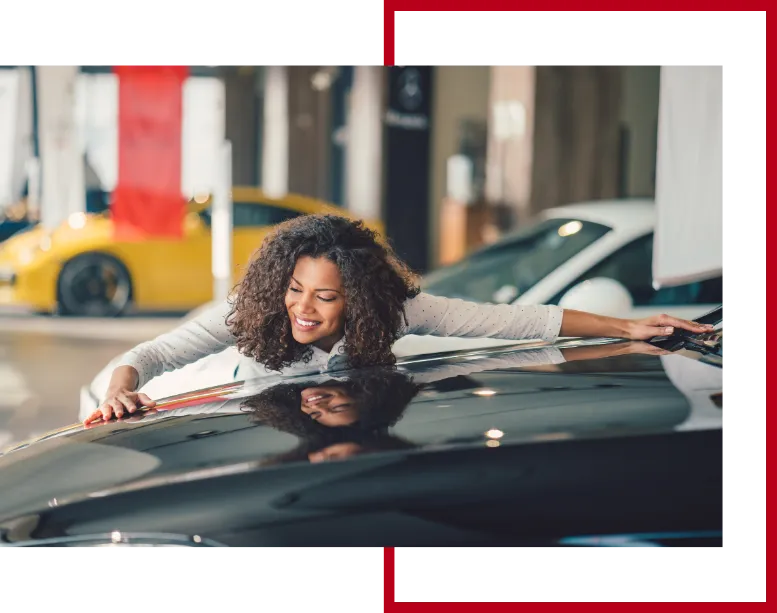Your Premier Auto Tint Miami Destination
Welcome to Black Diamonds Tinting Garage, the ultimate destination for auto tinting in Miami and the surrounding areas. Located in the heart of Homestead, FL, we are dedicated to transforming your vehicle not only to enhance its aesthetic appeal but also to improve its functionality through our exceptional window tinting services.
Our expertise goes beyond just auto tinting; we offer an array of services designed to elevate your vehicle's style and performance, including car wraps, headlight wraps, LED lights, and custom tires and rims.
At Black Diamonds Tinting Garage, we're passionate about cars and even more passionate about satisfying our customers. Let us help you make a statement with your vehicle while enjoying the benefits of our top-notch services.

Start Your Car's Transformation Today
Read Our Newest Blogs
Lorem ipsum dolor sit amet, consectetur adipiscing elit. Aliquam


Essential Guide to Selecting Automotive Glass & Window Tinting for Optimal Protection and Style
The appearance, comfort, and protection of your vehicle rely heavily on the quality of its glass and the performance of its window tint. In today’s competitive automotive world, choosing the right automotive glass and window tinting solution in window tinting homestead can enhance driving comfort, reduce glare, and protect passengers from harmful UV rays. This guide reviews the key types of automotive glass, evaluates window tint film types and their features, explains how to choose the proper window tint shade in window tinting homestead, and outlines what to expect from professional installations. Whether you want to boost your vehicle’s aesthetics or guard against heat and UV degradation, this guide will help you make an informed decision.
Transitioning into the specifics of automotive glass and window tint, the sections below break down various products and installation specifications with expert recommendations.
What Are the Key Types of Automotive Glass Available?
Automotive glass comes in several types, each suited for different applications. The main types include laminated and tempered glass, with further distinctions between Original Equipment Manufacturer (OEM) and aftermarket glass. Typically, OEM glass is made to the car manufacturer’s specifications, ensuring perfect fitment and performance. In contrast, aftermarket glass is made by third-party suppliers and may vary in quality depending on production standards.
How Do OEM Glass and Aftermarket Glass Differ?
OEM glass is produced with strict quality control, offering superior durability, clarity, and impact resistance. Its proprietary coatings also help reduce scratches and internal noise. Aftermarket glass, while budget-friendly, may suffer from slight variations affecting clarity, noise levels, and breakage resistance. Vehicles with OEM glass have been noted to have roughly 20% lower breakage rates compared to some aftermarket alternatives.
What Are the Benefits of Laminated vs. Tempered Glass?
Laminated glass is made by bonding a layer of polyvinyl butyral (PVB) between two glass layers. This construction gives it great impact resistance and keeps the glass intact during impact, reducing injury risk and dampening sound. Tempered glass is heat-treated for added strength and breaks into small, rounded pieces to lessen injury risk from sharp shards. Laminated glass can offer up to a 25% improvement in shatter resistance, making it ideal for windshields and front windows, while tempered glass is effective in areas that require maximum strength.
Which Automotive Glass Types Are Best for Different Car Models?
The choice of glass depends on vehicle design and usage. High-performance cars often use tempered glass to save weight and provide strength, whereas luxury vehicles favor laminated glass for the added noise insulation and safety benefits. A survey from 2023 noted that over 80% of premium car manufacturers use laminated safety glass for windshields to boost crash performance. For vehicles with advanced sensors or driver assist systems, OEM glass is generally the most compatible option.
What Are the Different Window Tinting Film Types and Their Features?
Window tinting films come in several varieties, each engineered to balance UV protection, heat rejection, aesthetics, and durability. The main categories include ceramic, carbon, metallic, dyed, and hybrid films.
How Does Ceramic Tint Compare to Carbon and Metallic Films?
Ceramic tints use nano-ceramic particles that are non-metallic and non-conductive. This allows them to block up to 99% of harmful UV rays and reject a significant amount of infrared heat while remaining thin and not interfering with electronic signals. Carbon tint films provide a matte finish and stable color without fading, whereas metallic films reflect solar energy effectively, though they may cause signal interference. Studies indicate that ceramic films generally offer better clarity and temperature reduction than both carbon and metallic options.
What Are Dyed and Hybrid Window Tints?
Dyed window tints, made with organic dyes in a polymer base, are a cost-effective option that enhances appearance and provides basic UV protection. However, they may fade with prolonged exposure to sunlight. Hybrid tints combine the attributes of dyed and metallic films, offering a balance of heat rejection and aesthetics without strong interference issues. This makes hybrids a good choice for those seeking improved performance without a high cost.
Which Tint Film Offers the Best UV Protection and Heat Reduction?
Ceramic tint films are the top choice for blocking UV rays and reducing heat, blocking nearly 99% of UV radiation and lowering interior temperatures by around 20°F on hot days. While metallic films may reject up to 70% of heat, ceramics can reach closer to 80% without affecting electronic signals, making them optimal for overall driving comfort and interior protection.
How to Choose the Right Window Tint Shade for Your Vehicle?
Choosing the right tint shade is a balance between functionality, aesthetics, and legal compliance. The tint shade influences how much light enters the cabin, affects heat reduction, glare, and privacy, and must also adhere to local legal standards.
What Are Legal Regulations for Tint Darkness in Different Regions?
Window tint regulations vary by state and locality. For example, in many parts of Florida the law allows slightly darker tints on rear windows than on front side windows to ensure proper visibility. Regulations might require a Visible Light Transmission (VLT) rate of 35-50% on front windows and up to 20% on rear windows to ensure safety, especially at night. It is vital to check local rules before installation to avoid fines or mandatory adjustments.
How Does Tint Shade Affect Privacy, Aesthetics, and Visibility?
A darker tint increases privacy by limiting external views into the vehicle, which is beneficial in busy urban environments. However, excessively dark tints can reduce visibility, particularly in low-light conditions. From an aesthetic perspective, the right tint shade should match the vehicle’s design; a matte or reflective finish can enhance a luxury look, while lighter tints may suit sportier styles. Professionals often recommend a mid-range tint (35-50% VLT) as it offers a good compromise between privacy, style, and clear visibility.
Can Window Tinting Improve Vehicle Resale Value?
Yes, high-quality, professionally installed tinting helps maintain the vehicle’s interior by reducing UV damage and heat-related wear, enhancing both aesthetics and resale appeal. Studies have shown that such tinting can increase a vehicle’s resale value by up to 10%, assuming the tint complies with legal standards.
What Should You Expect From Professional Automotive Glass and Tint Installation?
Professional installations provide reliable results that safeguard both the vehicle and its occupants. Accredited service providers ensure precision in workmanship through certified technicians and offer guarantees on both products and labor. The process typically involves inspection, thorough pre-cleaning, precise application, and final quality checks to guarantee no bubbles, creases, or misalignments.
Why Is Certified Technician Installation Important?
Certified technicians are trained to handle the complexities of modern automotive glass and tinting. Their expertise minimizes risks such as air leaks, increased wind noise, or improper adhesion that can lead to peeling or bubbling. Studies have shown a 30% reduction in post-installation issues when work is done by certified professionals, ensuring safer, long-lasting results.
How Long Does Installation Typically Take?
Installation time varies by job type. A standard windshield or front window tinting may take 1–2 hours, whereas full-vehicle tinting can take several hours to ensure proper fit and finish. Adequate time for curing and post-installation inspections is essential to achieving maximum UV and heat protection and overall performance.
What Are Common Installation Issues and How Are They Resolved?
Common issues include air bubbles, misalignment, and adhesive contamination. These problems are resolved by proper surface cleaning, controlled environmental conditions, and using specialized tools such as squeegees and heat guns. For instance, bubbles can be eliminated by applying gentle heat to soften the adhesive and then smoothing the film carefully.
What Are the Main Benefits of Automotive Window Tinting?
Window tinting offers numerous benefits including UV protection, reduced interior heat, enhanced privacy, and improved driving comfort. It not only preserves the vehicle’s interior but also contributes to overall driving safety.
How Does Tinting Protect Against UV Rays and Heat?
High-performance tint films can block up to 99% of harmful UV rays, reducing the risk of skin cancer and interior fading. They also significantly lower interior temperatures—by about 20°F on sunny days—helping reduce reliance on air conditioning, improve fuel efficiency, and lessen the vehicle’s carbon footprint.
In What Ways Does Window Tinting Enhance Vehicle Privacy and Security?
Tinted windows limit external visibility, protecting personal belongings and reducing the risk of theft. They also help cut down on glare from sunlight and oncoming headlights, contributing to safer driving conditions and less distraction for the driver.
How Can Tinting Improve Driving Comfort and Reduce Glare?
Reducing glare through tinting not only minimizes eye strain but also enhances overall driving comfort. Studies indicate that drivers benefit from improved comfort, experiencing up to a 30% improvement in visual clarity during peak sunlight hours.
Which Brands of Window Tint Film Are Trusted for Quality and Durability?
Top brands such as 3M, LLumar, and SunTek are trusted for their innovation, quality, and long-lasting performance. These companies invest in advanced technology and offer extensive warranties—often up to 10 years—to ensure their films provide excellent UV rejection, heat reduction, and clarity.
What Makes 3M, LLumar, and SunTek Popular Choices?
3M is known for its cutting-edge products that offer high UV and infrared rejection without interfering with electronic signals. LLumar balances performance with an attractive finish, and SunTek’s films benefit from advanced nanotechnology for enhanced longevity. Their comprehensive warranties also add assurance for long-term performance.
How Do Warranty and Product Lifespan Affect Your Tinting Decision?
A longer warranty reflects confidence in a product’s durability. High-quality films that resist fading, bubbling, and peeling reduce long-term maintenance costs and help maintain the vehicle’s resale value. Choosing films with proven longevity ensures that the investment in window tinting pays off over time.
How Can You Maintain and Care for Your Automotive Glass and Window Tint?
Proper maintenance is vital to keep your glass clear and tint effective. Regular cleaning, inspections, and prompt repairs help prolong the life of both components.
What Are the Best Cleaning Practices for Tinted Windows?
Use a soft, non-abrasive cloth and a mild, pH-neutral soap solution. Avoid ammonia-based or alcohol cleaners, as they can damage the tint. Cleaning in a shaded area helps prevent streaking caused by quick drying.
When and How Should Window Tint Be Removed or Replaced?
Tint should be replaced when signs of bubbling, peeling, or discoloration appear. Environmental exposure can accelerate wear, so it is generally recommended to replace tint every 5–7 years. Professional removal and reapplication help protect the underlying glass.
How to Identify and Fix Common Tinting Problems?
Common issues such as bubbling, peeling, or fading can often be fixed by gentle heating and smoothing of the film. For severe damage, complete replacement is advised. Regular professional inspections can help catch these issues early.
Frequently Asked Questions
Q: How often should I have my window tint professionally inspected? A: Every six months to a year—especially in areas with extreme weather—to catch early signs of peeling or bubbling.
Q: Can I clean my tinted windows with regular household cleaners? A: No. Use a mild, pH-neutral soap and microfiber cloth to avoid damaging the tint.
Q: Does window tinting reduce glare effectively for night driving? A: Yes, quality tinting significantly reduces glare from headlights and streetlights, though it must meet legal limits for visibility.
Q: What warranty should I look for when selecting window tint films? A: Look for reputable brands offering warranties ranging from 5 to 10 years, which indicate durability and quality.
Q: Can window tinting affect the resale value of my vehicle? A: Absolutely. Professionally installed tint can preserve the vehicle’s interior from UV damage and increase resale value by up to 10%.
Q: What factors should I consider when choosing the right tint shade? A: Consider local legal regulations, desired privacy, impact on driving visibility, and overall aesthetics. A balanced mid-range tint is typically best.
Q: How does professional installation affect the longevity of automotive glass and tint? A: Certified installation reduces risks such as air bubbles and misalignment, extending the life of your glass and tint while lowering future maintenance costs.
By understanding these points, car owners can make well-informed decisions about selecting and maintaining their automotive glass and window tinting. This comprehensive guide helps maximize comfort, safety, and vehicle value for the long term.


Essential Guide to Selecting Automotive Glass & Window Tinting for Optimal Protection and Style
The appearance, comfort, and protection of your vehicle rely heavily on the quality of its glass and the performance of its window tint. In today’s competitive automotive world, choosing the right automotive glass and window tinting solution in window tinting homestead can enhance driving comfort, reduce glare, and protect passengers from harmful UV rays. This guide reviews the key types of automotive glass, evaluates window tint film types and their features, explains how to choose the proper window tint shade in window tinting homestead, and outlines what to expect from professional installations. Whether you want to boost your vehicle’s aesthetics or guard against heat and UV degradation, this guide will help you make an informed decision.
Transitioning into the specifics of automotive glass and window tint, the sections below break down various products and installation specifications with expert recommendations.
What Are the Key Types of Automotive Glass Available?
Automotive glass comes in several types, each suited for different applications. The main types include laminated and tempered glass, with further distinctions between Original Equipment Manufacturer (OEM) and aftermarket glass. Typically, OEM glass is made to the car manufacturer’s specifications, ensuring perfect fitment and performance. In contrast, aftermarket glass is made by third-party suppliers and may vary in quality depending on production standards.
How Do OEM Glass and Aftermarket Glass Differ?
OEM glass is produced with strict quality control, offering superior durability, clarity, and impact resistance. Its proprietary coatings also help reduce scratches and internal noise. Aftermarket glass, while budget-friendly, may suffer from slight variations affecting clarity, noise levels, and breakage resistance. Vehicles with OEM glass have been noted to have roughly 20% lower breakage rates compared to some aftermarket alternatives.
What Are the Benefits of Laminated vs. Tempered Glass?
Laminated glass is made by bonding a layer of polyvinyl butyral (PVB) between two glass layers. This construction gives it great impact resistance and keeps the glass intact during impact, reducing injury risk and dampening sound. Tempered glass is heat-treated for added strength and breaks into small, rounded pieces to lessen injury risk from sharp shards. Laminated glass can offer up to a 25% improvement in shatter resistance, making it ideal for windshields and front windows, while tempered glass is effective in areas that require maximum strength.
Which Automotive Glass Types Are Best for Different Car Models?
The choice of glass depends on vehicle design and usage. High-performance cars often use tempered glass to save weight and provide strength, whereas luxury vehicles favor laminated glass for the added noise insulation and safety benefits. A survey from 2023 noted that over 80% of premium car manufacturers use laminated safety glass for windshields to boost crash performance. For vehicles with advanced sensors or driver assist systems, OEM glass is generally the most compatible option.
What Are the Different Window Tinting Film Types and Their Features?
Window tinting films come in several varieties, each engineered to balance UV protection, heat rejection, aesthetics, and durability. The main categories include ceramic, carbon, metallic, dyed, and hybrid films.
How Does Ceramic Tint Compare to Carbon and Metallic Films?
Ceramic tints use nano-ceramic particles that are non-metallic and non-conductive. This allows them to block up to 99% of harmful UV rays and reject a significant amount of infrared heat while remaining thin and not interfering with electronic signals. Carbon tint films provide a matte finish and stable color without fading, whereas metallic films reflect solar energy effectively, though they may cause signal interference. Studies indicate that ceramic films generally offer better clarity and temperature reduction than both carbon and metallic options.
What Are Dyed and Hybrid Window Tints?
Dyed window tints, made with organic dyes in a polymer base, are a cost-effective option that enhances appearance and provides basic UV protection. However, they may fade with prolonged exposure to sunlight. Hybrid tints combine the attributes of dyed and metallic films, offering a balance of heat rejection and aesthetics without strong interference issues. This makes hybrids a good choice for those seeking improved performance without a high cost.
Which Tint Film Offers the Best UV Protection and Heat Reduction?
Ceramic tint films are the top choice for blocking UV rays and reducing heat, blocking nearly 99% of UV radiation and lowering interior temperatures by around 20°F on hot days. While metallic films may reject up to 70% of heat, ceramics can reach closer to 80% without affecting electronic signals, making them optimal for overall driving comfort and interior protection.
How to Choose the Right Window Tint Shade for Your Vehicle?
Choosing the right tint shade is a balance between functionality, aesthetics, and legal compliance. The tint shade influences how much light enters the cabin, affects heat reduction, glare, and privacy, and must also adhere to local legal standards.
What Are Legal Regulations for Tint Darkness in Different Regions?
Window tint regulations vary by state and locality. For example, in many parts of Florida the law allows slightly darker tints on rear windows than on front side windows to ensure proper visibility. Regulations might require a Visible Light Transmission (VLT) rate of 35-50% on front windows and up to 20% on rear windows to ensure safety, especially at night. It is vital to check local rules before installation to avoid fines or mandatory adjustments.
How Does Tint Shade Affect Privacy, Aesthetics, and Visibility?
A darker tint increases privacy by limiting external views into the vehicle, which is beneficial in busy urban environments. However, excessively dark tints can reduce visibility, particularly in low-light conditions. From an aesthetic perspective, the right tint shade should match the vehicle’s design; a matte or reflective finish can enhance a luxury look, while lighter tints may suit sportier styles. Professionals often recommend a mid-range tint (35-50% VLT) as it offers a good compromise between privacy, style, and clear visibility.
Can Window Tinting Improve Vehicle Resale Value?
Yes, high-quality, professionally installed tinting helps maintain the vehicle’s interior by reducing UV damage and heat-related wear, enhancing both aesthetics and resale appeal. Studies have shown that such tinting can increase a vehicle’s resale value by up to 10%, assuming the tint complies with legal standards.
What Should You Expect From Professional Automotive Glass and Tint Installation?
Professional installations provide reliable results that safeguard both the vehicle and its occupants. Accredited service providers ensure precision in workmanship through certified technicians and offer guarantees on both products and labor. The process typically involves inspection, thorough pre-cleaning, precise application, and final quality checks to guarantee no bubbles, creases, or misalignments.
Why Is Certified Technician Installation Important?
Certified technicians are trained to handle the complexities of modern automotive glass and tinting. Their expertise minimizes risks such as air leaks, increased wind noise, or improper adhesion that can lead to peeling or bubbling. Studies have shown a 30% reduction in post-installation issues when work is done by certified professionals, ensuring safer, long-lasting results.
How Long Does Installation Typically Take?
Installation time varies by job type. A standard windshield or front window tinting may take 1–2 hours, whereas full-vehicle tinting can take several hours to ensure proper fit and finish. Adequate time for curing and post-installation inspections is essential to achieving maximum UV and heat protection and overall performance.
What Are Common Installation Issues and How Are They Resolved?
Common issues include air bubbles, misalignment, and adhesive contamination. These problems are resolved by proper surface cleaning, controlled environmental conditions, and using specialized tools such as squeegees and heat guns. For instance, bubbles can be eliminated by applying gentle heat to soften the adhesive and then smoothing the film carefully.
What Are the Main Benefits of Automotive Window Tinting?
Window tinting offers numerous benefits including UV protection, reduced interior heat, enhanced privacy, and improved driving comfort. It not only preserves the vehicle’s interior but also contributes to overall driving safety.
How Does Tinting Protect Against UV Rays and Heat?
High-performance tint films can block up to 99% of harmful UV rays, reducing the risk of skin cancer and interior fading. They also significantly lower interior temperatures—by about 20°F on sunny days—helping reduce reliance on air conditioning, improve fuel efficiency, and lessen the vehicle’s carbon footprint.
In What Ways Does Window Tinting Enhance Vehicle Privacy and Security?
Tinted windows limit external visibility, protecting personal belongings and reducing the risk of theft. They also help cut down on glare from sunlight and oncoming headlights, contributing to safer driving conditions and less distraction for the driver.
How Can Tinting Improve Driving Comfort and Reduce Glare?
Reducing glare through tinting not only minimizes eye strain but also enhances overall driving comfort. Studies indicate that drivers benefit from improved comfort, experiencing up to a 30% improvement in visual clarity during peak sunlight hours.
Which Brands of Window Tint Film Are Trusted for Quality and Durability?
Top brands such as 3M, LLumar, and SunTek are trusted for their innovation, quality, and long-lasting performance. These companies invest in advanced technology and offer extensive warranties—often up to 10 years—to ensure their films provide excellent UV rejection, heat reduction, and clarity.
What Makes 3M, LLumar, and SunTek Popular Choices?
3M is known for its cutting-edge products that offer high UV and infrared rejection without interfering with electronic signals. LLumar balances performance with an attractive finish, and SunTek’s films benefit from advanced nanotechnology for enhanced longevity. Their comprehensive warranties also add assurance for long-term performance.
How Do Warranty and Product Lifespan Affect Your Tinting Decision?
A longer warranty reflects confidence in a product’s durability. High-quality films that resist fading, bubbling, and peeling reduce long-term maintenance costs and help maintain the vehicle’s resale value. Choosing films with proven longevity ensures that the investment in window tinting pays off over time.
How Can You Maintain and Care for Your Automotive Glass and Window Tint?
Proper maintenance is vital to keep your glass clear and tint effective. Regular cleaning, inspections, and prompt repairs help prolong the life of both components.
What Are the Best Cleaning Practices for Tinted Windows?
Use a soft, non-abrasive cloth and a mild, pH-neutral soap solution. Avoid ammonia-based or alcohol cleaners, as they can damage the tint. Cleaning in a shaded area helps prevent streaking caused by quick drying.
When and How Should Window Tint Be Removed or Replaced?
Tint should be replaced when signs of bubbling, peeling, or discoloration appear. Environmental exposure can accelerate wear, so it is generally recommended to replace tint every 5–7 years. Professional removal and reapplication help protect the underlying glass.
How to Identify and Fix Common Tinting Problems?
Common issues such as bubbling, peeling, or fading can often be fixed by gentle heating and smoothing of the film. For severe damage, complete replacement is advised. Regular professional inspections can help catch these issues early.
Frequently Asked Questions
Q: How often should I have my window tint professionally inspected? A: Every six months to a year—especially in areas with extreme weather—to catch early signs of peeling or bubbling.
Q: Can I clean my tinted windows with regular household cleaners? A: No. Use a mild, pH-neutral soap and microfiber cloth to avoid damaging the tint.
Q: Does window tinting reduce glare effectively for night driving? A: Yes, quality tinting significantly reduces glare from headlights and streetlights, though it must meet legal limits for visibility.
Q: What warranty should I look for when selecting window tint films? A: Look for reputable brands offering warranties ranging from 5 to 10 years, which indicate durability and quality.
Q: Can window tinting affect the resale value of my vehicle? A: Absolutely. Professionally installed tint can preserve the vehicle’s interior from UV damage and increase resale value by up to 10%.
Q: What factors should I consider when choosing the right tint shade? A: Consider local legal regulations, desired privacy, impact on driving visibility, and overall aesthetics. A balanced mid-range tint is typically best.
Q: How does professional installation affect the longevity of automotive glass and tint? A: Certified installation reduces risks such as air bubbles and misalignment, extending the life of your glass and tint while lowering future maintenance costs.
By understanding these points, car owners can make well-informed decisions about selecting and maintaining their automotive glass and window tinting. This comprehensive guide helps maximize comfort, safety, and vehicle value for the long term.
Excellence through Passion
Experience the Black Diamonds Difference - Where Passion Meets Precision

See the Quality
"We believe in excellence, delivering unmatched quality in every detail of our work."

Experience the Service
"We believe in service beyond expectations, treating each customer as part of our automotive family."

Live the Passion
"We believe in our passion for cars, a driving force that fuels our creativity and commitment to your vehicle's transformation."
Auto Window Tinting: Enhancing Your Driving Experience
Auto window tinting is more than just an upgrade for your vehicle’s appearance; it’s an essential service that offers numerous benefits. At Black Diamonds Tinting Garage, we specialize in high-quality window tinting that provides:
Heat Reduction:
Our window tints are designed to block a significant amount of the sun's heat, making the interior of your car cooler and more comfortable during those scorching Miami days.
UV Protection:
Protect yourself and your car’s interior from harmful UV rays. Our tints can block up to 99% of these rays, reducing the risk of skin cancer and preventing the fading of your car's upholstery.
Privacy and Security:
Window tinting adds an extra layer of privacy, keeping prying eyes away from your vehicle's interior. It also makes it harder for thieves to see valuables inside your car.
Glare Reduction:
Driving with the sun glaring in your eyes is not just annoying but dangerous. Our window tints help reduce glare, making driving safer and more comfortable.
Increased Durability:
Our window films add an extra layer of protection to your glass, making it less likely to shatter in the event of an accident.
With Black Diamonds Tinting Garage, you can trust that your vehicle is in expert hands. Our team uses only the highest quality materials and the latest techniques in the industry to ensure that your tint looks great and lasts for years to come.


How Dark Can Your Tint Be in Florida?
In Florida, the amount of light that can pass through your window tint is regulated to ensure safety on the roads. Here’s what you need to know about Florida’s window tint laws:
Front Side Windows: Must allow more than 28% of light in.
Back Side Windows: Must allow more than 15% of light in.
Rear Window: Must allow more than 15% of light in.
At Black Diamonds Tinting Garage, we are well-versed in Florida's tinting regulations and ensure that your vehicle is compliant with the state laws, all while achieving the look and protection you desire.
Why Choose Black Diamonds Tinting Garage?
Choosing Black Diamonds Tinting Garage for your auto tint Miami needs means opting for unparalleled quality and service. Here’s why we stand out:
Expertise and Experience: With years of experience in the industry, our team of professionals is skilled in delivering the highest quality window tinting services.
Customization: We understand that your vehicle is a reflection of your style. That's why we offer customizable solutions to match your unique taste.
Comprehensive Services: Beyond auto tinting, we provide a range of services to enhance your vehicle's appearance and functionality, making us your one-stop shop for automotive customization.
Customer Satisfaction: At Black Diamonds Tinting Garage, your satisfaction is our top priority. We go above and beyond to ensure you're delighted with the results.

Let's Make Your Car Stand Out
Ready to give your vehicle the makeover it deserves? Visit us at Black Diamonds Tinting Garage in Homestead, FL, for top-tier auto tinting and more. Whether you're looking to keep your car cool, add a layer of privacy, or simply upgrade its look, our team is here to make it happen. Contact us today to schedule your appointment and join the ranks of our satisfied customers who trust us to make their cars look and feel incredible. At Black Diamonds Tinting Garage, we're not just about auto tint; we're about giving your vehicle an identity. Let's make your car not only a mode of transportation but a statement of your personal style.

Contact
Hours:
Monday - Saturday
9am - 5:30pm
Sunday
10am - 2pm
© 2026 Black Diamonds Tinting Garage - All Rights Reserved,



